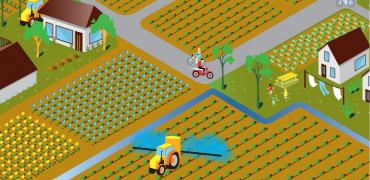Approximately 90.000 people in the Netherlands reside within 50 meters of flower bulb or fruit cultivation. Because it is unclear how many of these people are exposed to pesticides or if their health is at risk as a result, RIVM (Rijksinstituut voor Volksgezondheid en Milieu) Rijksinstituut voor Volksgezondheid en Milieu has coordinated scientific research into the exposure of residents to pesticides.
Approximately 90.000 people in the Netherlands reside within 50 meters of flower bulb or fruit cultivation. Because it is unclear how many of these people are exposed to pesticides or if their health is at risk as a result, RIVM (Rijksinstituut voor Volksgezondheid en Milieu) has coordinated scientific research into the exposure of residents to pesticides.
The research is based upon advice from the Dutch Health Council and is carried out by order of the Dutch ministries of Infrastructure & Water Management and Economic Affairs & Climate Policy.

